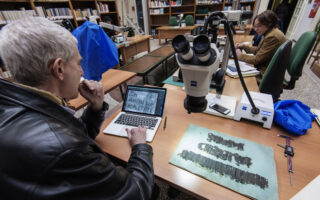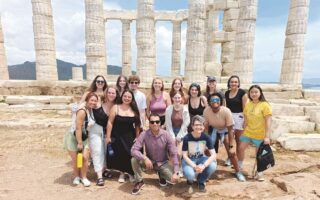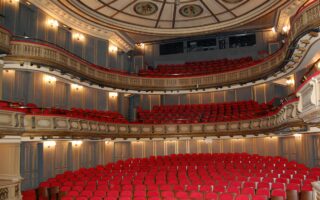Debates over sacred images in the Byzantine Empire show why it’s hard to appease any side

An adjunct lecturer at Hamline University recently lost her job for showing an image of Prophet Muhammad in an art history class, which some students and administrators considered to be Islamophobic. The university later retracted the accusation of Islamophobia and said in a statement, “It was never our intent to suggest that academic freedom is of lower concern or value than our students,” but still insisted that “care” does not “supersede academic freedom, the two coexist.”
An earlier statement from Hamline President Fayneese Miller had noted, “Students do not relinquish their faith in the classroom,” which suggested that classrooms need to be visually tailored to a specific faith.
As a historian of Byzantine art familiar with the fierce debates over sacred images in the 8th and 9th centuries, I consider Miller’s statement a challenge to how students might study religious imagery at all.
The very example of the debates in the Byzantine Empire shows how hard it is to design a space that caters exactly to the specifications of any particular faith.
The debates over images in Byzantium
In Greek Orthodox Christianity, which was the official religion of the Byzantine Empire that lasted from 312 to 1453 AD, some factions were against sacred images and some in favor of them. The factions that were against images claimed that the image of Jesus Christ was unacceptable, since his nature was both divine and human.
This position argued that an image of Christ, therefore, either showed only his divinity – which was impossible, since divinity cannot be depicted in ordinary, human-made materials – or that such an image claimed Christ was not divine at all – also considered a heresy. An image of Christ could not be produced or displayed, since it put the artist and viewer in a false position regarding the Orthodox faith.
However, those who were in favor of images countered this stance by arguing that God, or divinity, had taken human shape in the form of Christ. The incarnation, meaning “enfleshment” of Christ, thus legitimized the making of images, since it made Christ accessible to humankind. This faction also argued that sacred images were necessary, as they served to remind viewers of the sacred beings they depicted, such as Christ, the Virgin and the saints.
Contradictions acknowledged on both sides
The differences between the two factions became clear in the Council of Hiereia, which was called by Emperor Constantine V in 754 AD to lay out the terms of those who were against images. However, despite affirming that sacred Christian imagery was blasphemous and should not be produced, this faction still stated:
“… we ordain that no one in charge of a church … shall venture … to lay his hands on the holy vessels … because they are adorned with figures. The same is … in regard to the vestments of the church, cloths, and all that is dedicated to divine service. …”
The above statement was at odds with the general stance of the council against images. It meant that the already existing sacred images were still considered holy, and vessels containing sacred images were permitted to remain intact. These vessels were in all probability used at the altar table in the sanctuary, the holiest part of a church.
The faction in favor of images won the debate in 843 AD. That was the year when the Greek Orthodox Church officially ruled that sacred images, or icons, were essential to that faith. But despite the victory, that side made an implicit concession to its opponents.
It was decreed that the sacred icon was not to be venerated for the materials of wood, wax, colors, or other matter it was composed of, or even the image it showed. There was a general idea that venerators, by lighting candles in front of icons and kissing and touching them, were directing attention to the materials and not to the holy subject. Instead, the image was supposed to lead the viewer’s mind to the holy subject, which was Christ, the Virgin or the saints.
In the 11th century, Symeon the New Theologian, an Orthodox monk, came to disregard this definition. A historian of Byzantine art Charles Barber argues that Symeon, despite being in favor of images, sought a spiritual experience during his prayers that went beyond the matter of the image.
Thus, each side of the Byzantine debates implicitly acknowledged the impossibility of any watertight, consistent theory regarding sacred images. By the same token, both sides indicated the impossibility of fashioning spaces that catered exactly to any Orthodox Christian position regarding such images.
Visual sanctity in the classroom
Returning to the contemporary classroom, to what extent can this space be visually controlled?
All art history instructors can certainly curate their lectures. Curation here inevitably means the inclusion and exclusion of certain things. However, it is unlikely that any degree or kind of selection would completely satisfy any single position regarding sacred images.
To demand that a discipline like art history maintain visual sanctity in the classroom is, I believe, tantamount to demanding the impossible.
Paroma Chatterjee is Associate Professor of Art History at the University of Michigan.
The Conversation is an independent and nonprofit source of news, analysis and commentary from academic experts. The Conversation is wholly responsible for the content.





